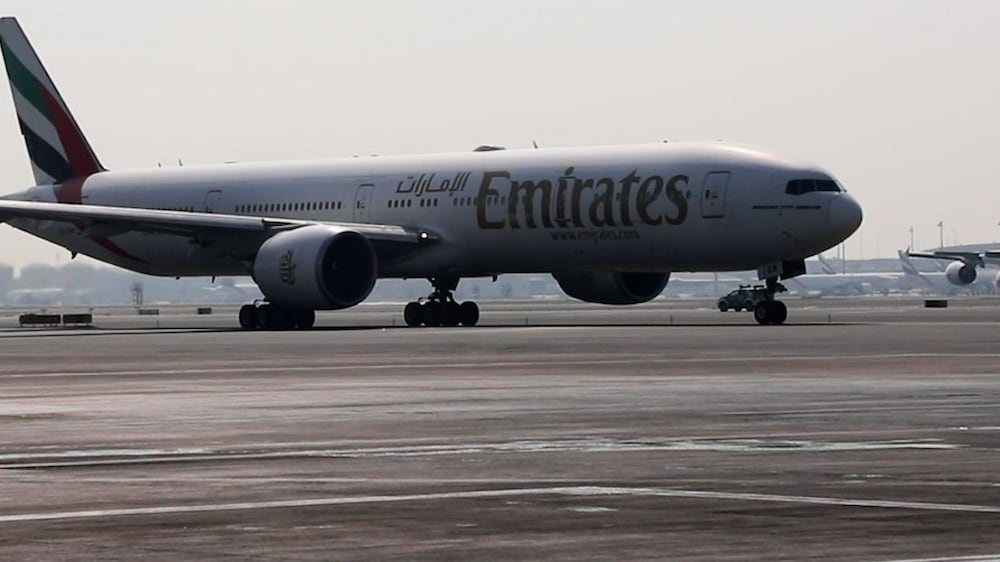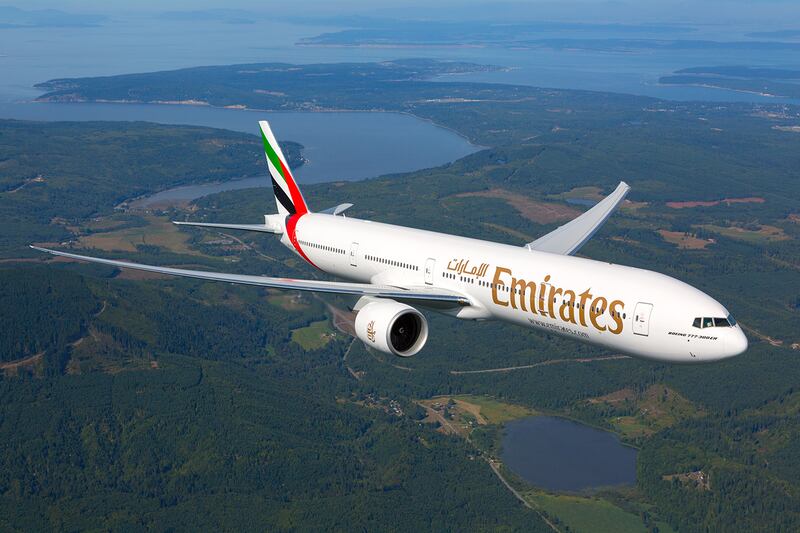Emirates airline has boosted operations by 31 per cent, in terms of its passenger carrying capacity, since the start of its financial year as global travel returns to pre-coronavirus levels after the Covid-19-induced slowdown.
This was measured in available seat kilometres.
The Dubai airline also plans to increase seat capacity in its northern summer schedule starting March 26, it said on Tuesday.
In the past months, the airline has rapidly grown its network operations.
It reintroduced services to five cities, unveiled flights to Tel Aviv, added 251 weekly flights on existing routes and continued to enhance its air and ground services.
“Emirates continues to expand its global network and deploy its capacity to meet travel demand across the world,” said chief commercial officer Adnan Kazim.
“Our financial year started relatively quietly as we held back our ramp-up until the planned northern runway rehabilitation programme at Dubai International airport was completed in June. From July 2022 onwards, it’s been non-stop expansion.”
Air travel demand has beaten expectations, driving the airline’s plans to hire additional pilots and cabin crew, return more Airbus A380s into service and rebuild its network to pre-pandemic levels, chief operating officer Adel Al Redha said on the sidelines of the Bahrain International Airshow in November.
Emirates intends to hire an additional 400 pilots and 5,000 to 6,000 cabin crew by the middle of 2023, recruiting to the maximum capacity of its training centres, he said at the time.
This will increases its current workforce of 4,500 pilots and 17,500 cabin crew.
The airline’s capacity and network have recovered to 80 per cent and 95 per cent of pre-pandemic levels, respectively, after international borders reopened and coronavirus-related restrictions eased.
Emirates currently operates a fleet of 120 Boeing 777 aircraft and 78 of its 116 Airbus A380s.
First Emirates flight powered by sustainable aviation fuel

It plans to return its full fleet of superjumbos into service by the end of 2023.
In the coming months, there will be more Emirates flights on established routes to Africa, Australia and Europe, while more routes will be reopened in East Asia, the airline said on Tuesday.
Emirates will also continue to scale up its A380 operations with the reintroduction of the double-decker jet to cities such as Glasgow, Casablanca, Beijing, Shanghai, Nice, Birmingham, Kuala Lumpur and Taipei.
“Customer demand has been very strong, and our forward bookings are also robust,” Mr Kazim said.
“Emirates is working hard on several fronts — to bring back operating capacity as quickly as the ecosystem can manage, while also upgrading our fleet and product.
“So far, four of our A380 aircraft have been completely refurbished with our new cabin interiors and premium economy seats, and more will enter service as our $2 billion cabin and service enhancement programme picks up pace.”
In Europe, the airline will increase the number of flights to key cities such as Amsterdam, Athens, Bologna, Budapest, London and Venice as it caters to growing demand.
Cities in Africa where services will be enhanced include Cairo, Dar es Salaam and Entebbe.
Emirates will also add more flights to Brisbane, Christchurch, Sydney and Melbourne.
“Emirates’ non-stop Australia flights will return to pre-pandemic levels to Sydney from May 1, Melbourne from March 26, and Brisbane on June 1,” the airline said.
It will also reintroduce flights in East Asia by adding capacity to Bangkok, Beijing, Hong Kong, Kuala Lumpur and Tokyo.







